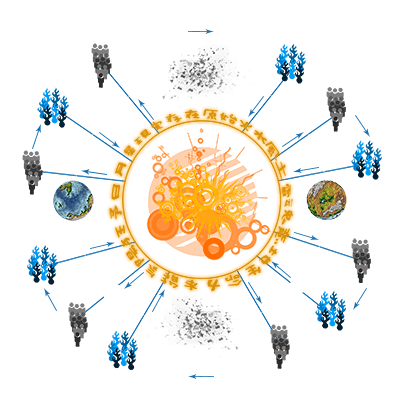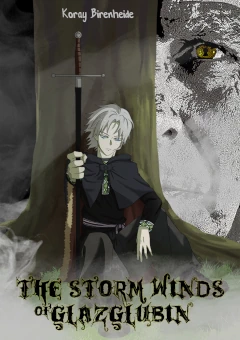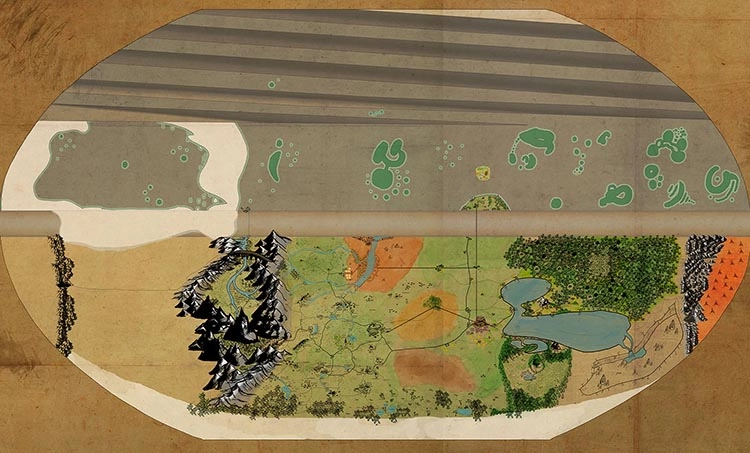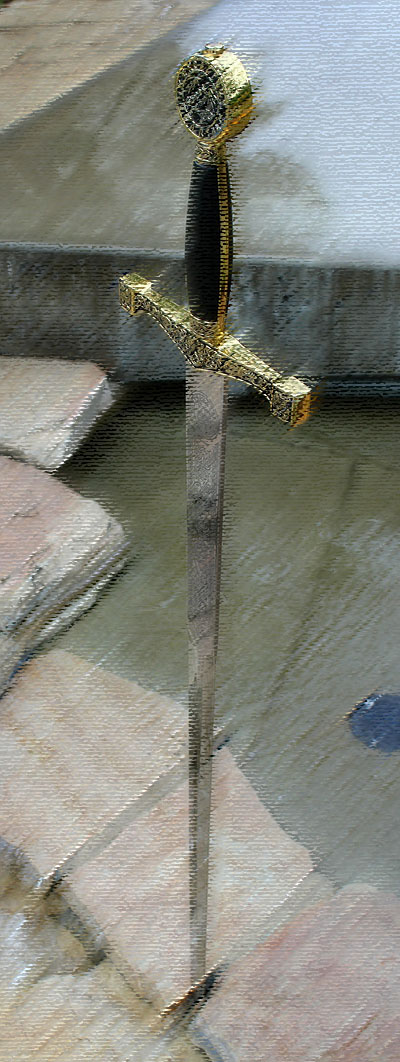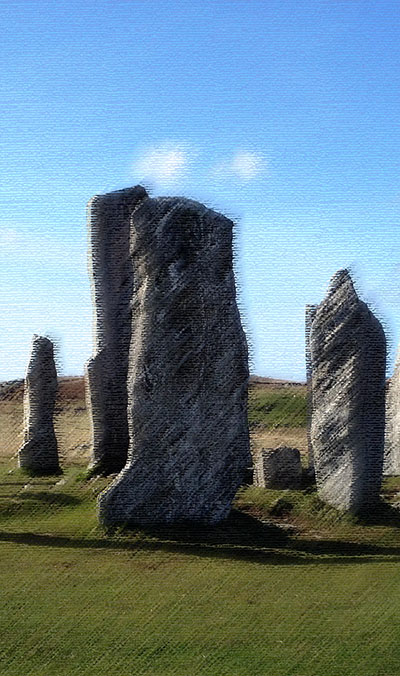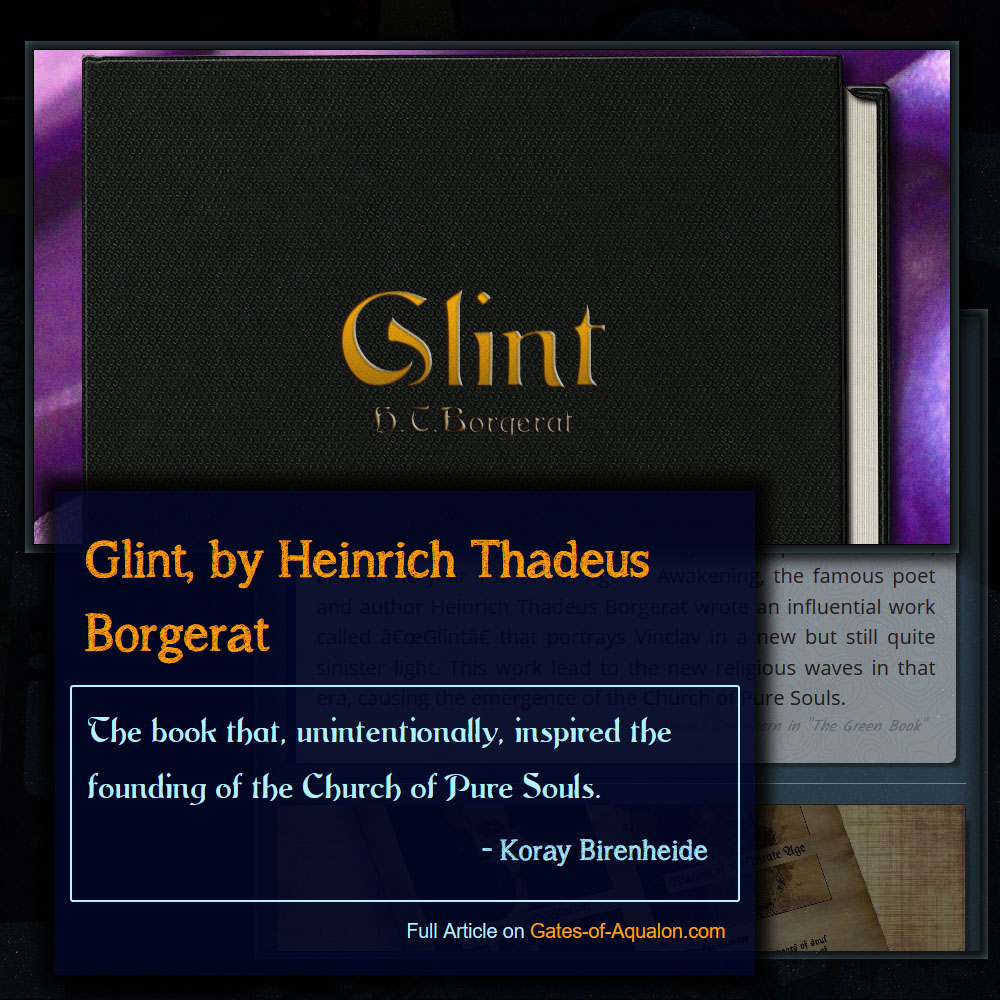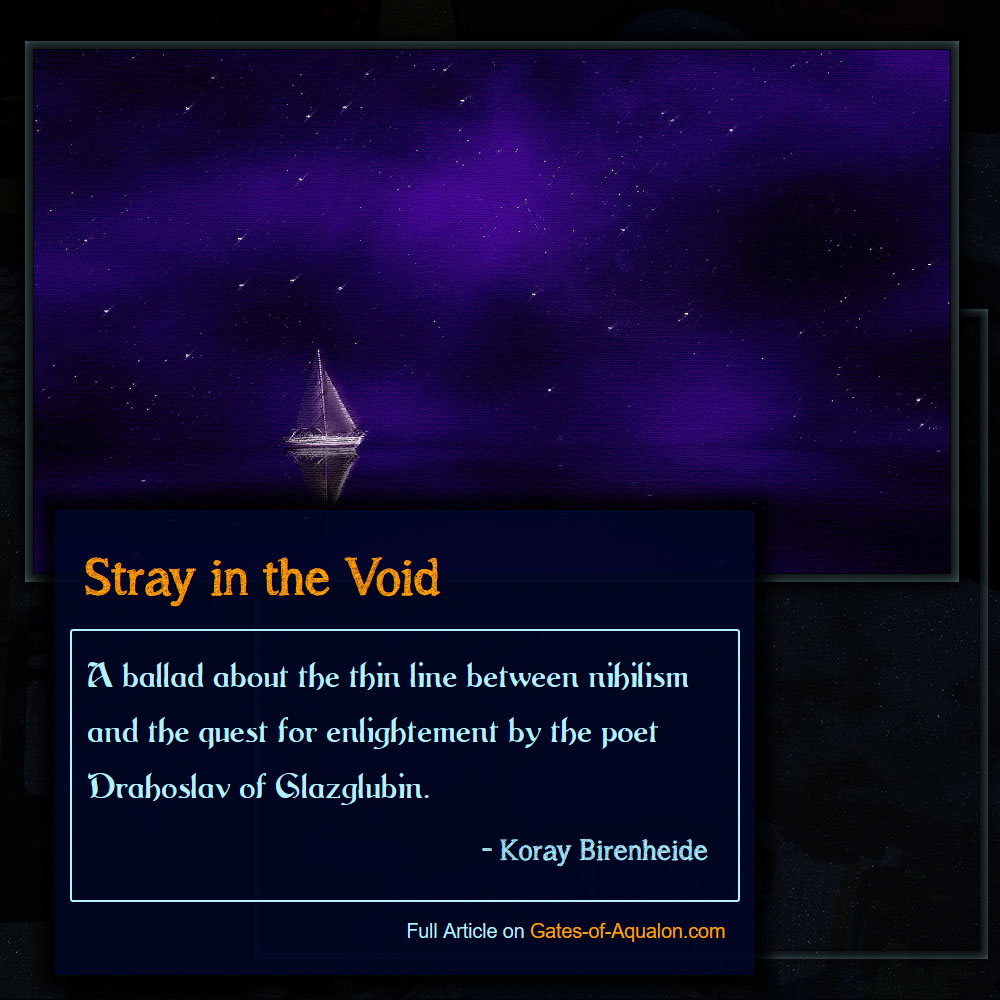The Angel Saxons are descendants of the Albenmannen, one of the ancestral peoples of the Nine Realms.
Hailed as the creators of
magic and great splendor, the Albenmannen ruled the Realm of Albenheim before the First Age (which began nearly eight thousand years ago), when the planet had not yet been formed. They built mighty castles on their floating shard world, and from the timber of the great Ætlaeik they crafted flying long ships to traverse the ethereal rapids of the river Bifröst, which connected the Nine Realms with its branch-like arms.
With the rise of Asgard, fueled by the Well of Wyrd, the last intersection between the realms and the
Great Wheel after Eschwaz the Conqueror, later known as Odin, had destroyed every other one, the Albenmannen would swear fealty to the new God-king. For him and his kin, they built great halls of stone and forged swords and spears and shields of magic and brilliant silver-steel.
Their culture was a great one, wreathed in traditions of war and magic, and these traditions would be carried on by their descendants, the Angel Saxons.
The First Age
The First Age begins with the Reshaping of the World out of the Nine Realms. Shielded by the faceless World Shaper, the Men of Midgard and the Swarten found themselves on the grassy plains of the Middle Lands, which they began to settle during this age. The Albenmannen and their cousins made their way down from Asgard, where the Old Gods had protected them from the Reshaping of the World. In time they became the Angel Saxons, and their cousins became the tribes of the North, sometimes called the Nordmen. Much settling was done during this age, and the first cities began to form on the face of Aqualon. The Iron Belt was a sheer impenetrable divide that was incapable of supporting agriculture or life stock, so no settlements were erected there, and no ships could be brought to the far side of the Rusty Shore, meaning the islands of the Ocean Belt remained uninhabited and unexplored for most parts of this age.— From "The Grand History of Aqualon"
The Mist Rises
When the Albenmannen rode down onto the Great Land on a beam of moonlight, they arrived at the northern tip of what would one day become the
Yamato Mountain Range. There, their leader, Sigurd the Mountain, who commanded rocks and earth as though they were an army and he their general, cast his gaze on the largest mountain he could see and called it to his side. He let rise from it a living statue of his lost love Helga, who had died during the War of the Reshaping. The statue reached her hands into the mountainside and pulled forth a plate so immense, it was most fit to become the new land of the children of Albenheim.
"We have fallen, brothers and sisters! We have fallen onto a new world, carved by our enemies. But we are the children of the gods, the children of magic! We will rise above all the peoples of the world! Rise like angels into the sky! From halls of stone to lands of stone, a pedestal to hold us high above the clouds, so that the Great Wheel may shine on our splendor! We have fallen as Albenmannen, brothers and sisters, but now we rise as Angels of the Rock!"— Sigurd the Mountain as he crafted the Titan of Helga and the Land of High Saxia
The newly made Angel Saxons climbed onto the great plate and were uplifted into the heavens, where they would once more build great halls of stone and let mighty magic flow forth from the houses of their ancient craft.
When the Titan of Helga had lifted the new land of High Saxia above her head, she opened her mouth and breathed a magic mist onto the land, which has surrounded her since the First Age.
People who have come in search of the legendary Angel Saxons have ever wandered through the mist in vain, believing its magical properties were confusing their senses when the only thing they ever had to do was to find the feet of the Titan and climb up, hoping it would not shake them like the ants they were...
Arms and Magic
The Shaper's Seal forced the Old Gods to remain within their realm of Asgard, which had survived the Reshaping... in a way. Though they were able to send their subjects down to Aqualon, they themselves were trapped; none who had gained immortality from the Well of Wyrd could leave Asgard, a fate they shared with the Vanier, who had betrayed them during the War of the Reshaping.
Focusing their energies on fighting the old enemy, they turned their attention away from Aqualon and in their stead, they made the Angel Saxons their envoys. They bestowed onto them ancient powers, and proclaimed the mightiest warriors among them Valkyries, angels of death to lead their troops into glorious battles.
In the stony halls of High Saxia, the Angel smiths forged weapons and armor of such might that they would make the people of the Middle Lands tremble in fear.
While the Nordmen carved out a meager but proud life in the cold reaches of the Great Land, below the Snowzone, the Middlish men and Swartalben prospered and began to spread beyond the lands they had first settled, moving eastward and westward to colonize the Yamato Mountain Range and the Lands around Lake Glazglubin.
The Angel Saxons took charge regularly, bringing weapons and magic to their brethren, the Kaltani, Gallians, and Skôts, leading them in raids and even small wars throughout the First Age and the Age of the Iron Divide.
Magic for Salvation
As the Angel Saxons and Kaltani druids came down south to the Middle Lands to erect their Angel Stones on the behest of Frey-ja in the 4th century AID, they found the first growing cities of the Middlish men and were ever impressed with their industriousness but also found themselves barred from lands now owned by ancient nobility.
Negotiations ensued and a deal was struck so that in exchange for building a number of Angel Stones for the Angel Saxons, the Middlanders would be taught some of the secrets of elemental magic.
The records of these dealings, which I found with the Null, indicate that the first magic taught to Middlanders was indeed fire magic, and it was indeed taught to them near the Charwoods at the birth place of Lumina Aka; so this must be where the misguided idea originated that magic was born in that place.
The Angel Saxons produced a great flame and taught the Middlanders how to preserve it, and from this they learned fire magic in its simpler forms, becoming able to protect themselves from flames and stay warm in cold nights, for fire magic was most revered to the Nordmen that had to live in the bitter cold below the Snowzone. In time a great shrine was built around that first flame, and glass was placed around it to further protect and showcase it as a constant vigil of fire mages kept it ablaze.
Naming Traditions
Eormengard, Edoma, Aethelthryd, Gwenawel, Gwendolyn, Begilda, Withburga, Aldreda, Aethelhild, Hendina, Freysta, Hildelida, Gytha, Frigyth, Baldethiva, Engeled, Heahthryth, Elfilda
Swidhelm, Andhun, Godwald, Thorsten, Ashker, Rakni, Rakas, Yilgen, Turec, Eadward, Beowulf, Wuldric, Wulfric, Elfric, Elric, Feolumaer, Scirheard, Rumwald, Aegenwulf, Byrhtferth, Fremund
Sleipnir, Hnossker, Wôti, Brewyke, Carley, Warf, Winlea, Llynshaw, Nansweald, Invercott, Kilgill, Hammahal, Rakas; these are the names of the old Albenmannen Dynasties, which survived the War of the Reshaping. They have carried on throughout the ages and are still held in high regard within High Saxia and beyond.
Those who have founded branch-families sometimes take up the name, with permission, adding the suffix "-kin" at the end, such as Wôtikin. However, most Angel Saxons do not have a family name in this way. Rather, they will receive a so-called "moniker", which is bestowed not by parents but by masters of a craft or guild. Depending on where the person has earned their name, that name will be chosen accordingly.
Angel Saxons who proved themselves first and foremost on the battlefield were often named after their favorite or most notoriously wielded implement of war: Names such as Elfilda the Hammer, Rakni the Spear, or Begilda the Iron Fist have been a common occurrence throughout the more raid- and war-intensive periods of Angel Saxon history.
Of course, "the Hammer" is also a name sometimes given to those who pursue the noble art of smithing, though most would hope for this to be a temporary name.
When an Angel Saxon smith forges a piece of magic arms or armor, a strand of their hair turns white as they carve a tiny piece of their soul into their creation. Among their kind, this is a form most beautiful as it is associated with the most masterful smiths, which are held in the highest regard among Angel kind.
When an Angel smith's hair has turned completely white and his or her eyes cobalt blue, they receive their master title, which represents the number of works they were capable of finishing before the spellblight took over. The most famous Angel smith was Bearin of One Hundred Hammer Strokes, who had forged one hundred powerful magic weapons and armor pieces before becoming a master smith.
Once this stage is reached, it need not mean the end of the smith in question, for spellblight incurred this way is rarely deadly. Still, if they continue to create more items with magical power, each piece will significantly shorten their lifespan, and if their soul is too damaged before they die, they lose their magic.— From "A History on the Oldest Sickness"
Culture
The language of the Angel Saxons is Valkyrian, which is not a part of the Gift of One-Hundred Tongues, which was imparted to mankind by the Great Clockwork during their creation. This gift gives humans the inherent ability to learn certain languages merely by hearing them for a short while, though nuance does take its time.
Some cultures, such as that of the Angel Saxons, who value the beauty of language and/or the aesthetics of words, have invented their very own languages, usually based on several base-dialects shared by the Gift. Angel Saxons believe that there is a great power in words, and in creating the language of Valkyrian, they have sought to empower their magic and elevate themselves above other cultures.
The Angel Saxons value these three things above everything else: Asthetics, Craftsmanship, and Prowess. With these ideals in their hearts, High Saxia has become one of the most beautiful and mighty, albeit veiled in obscurity, nations of the world.
They follow a strict code of law based on the old "Ragnerlôg", the god law of Asgard, which puts emphasis on honorable conduct and demands certain types of mediation when conflicts arise or crimes are committed, sometimes leading to a trial before a jury comprised of the heads of the old houses or a trial by combat, which can be fought by proxies.
Ideals
While the silk-like golden hair and stark blue eyes are staples of the Angel Saxon image and generally perceived as beautiful, the odd redhead of hair is mythically attributed to the soul of fire being strong in that person, which often leads to them being encouraged to join the guild of smiths.
The ideal beauty for Angel Saxons, however, lies beyond this heritage: The white hair and cobalt glowing eyes of spellblight are valued above all others, being called "the Mark of the Valkyrie". Throughout history, both the most accomplished Angel smiths and the most distinguished wielders of magic arms and armor have acquired the blight over the course of their work. Angel arms and armor draw on the soul, much like the
magic engines of modern Middlish men, though not quite in the same way.
Though a beauty ideal among Angel Saxons and other Nordmen, the sickness is severely stigmatized throughout the rest of the world, and it may be in no small part the Angel Saxons' fault.
Some sociologists from the Altonar university believe that the strong aversion to victims of spellblight felt by the people of the Great Land is due to the terror caused by Angel Saxon assault troops during the Age of Heroes. The snow-white hair and cobalt glowing eyes had become the image of the enemy during this bloody and terrifying war.

